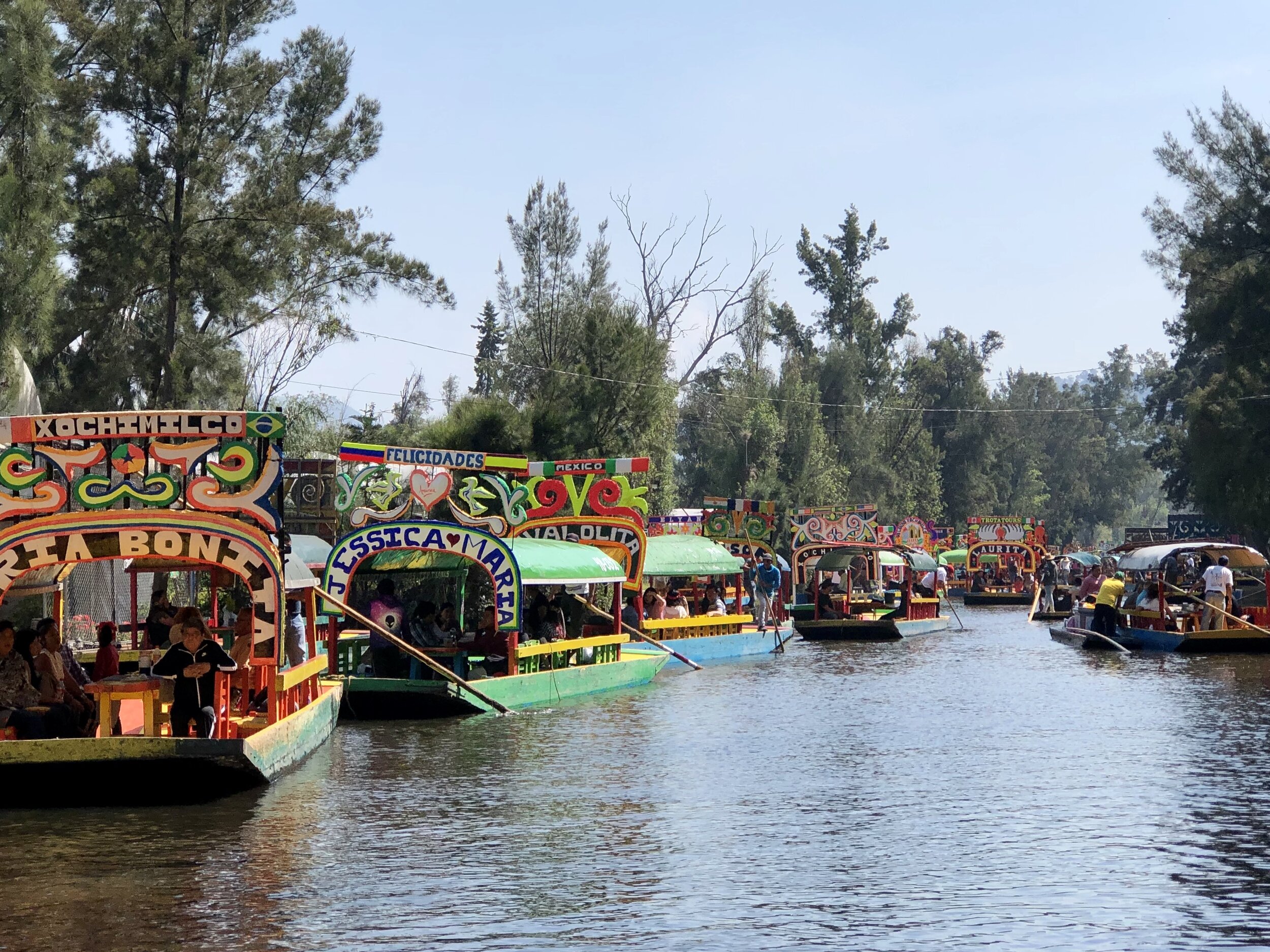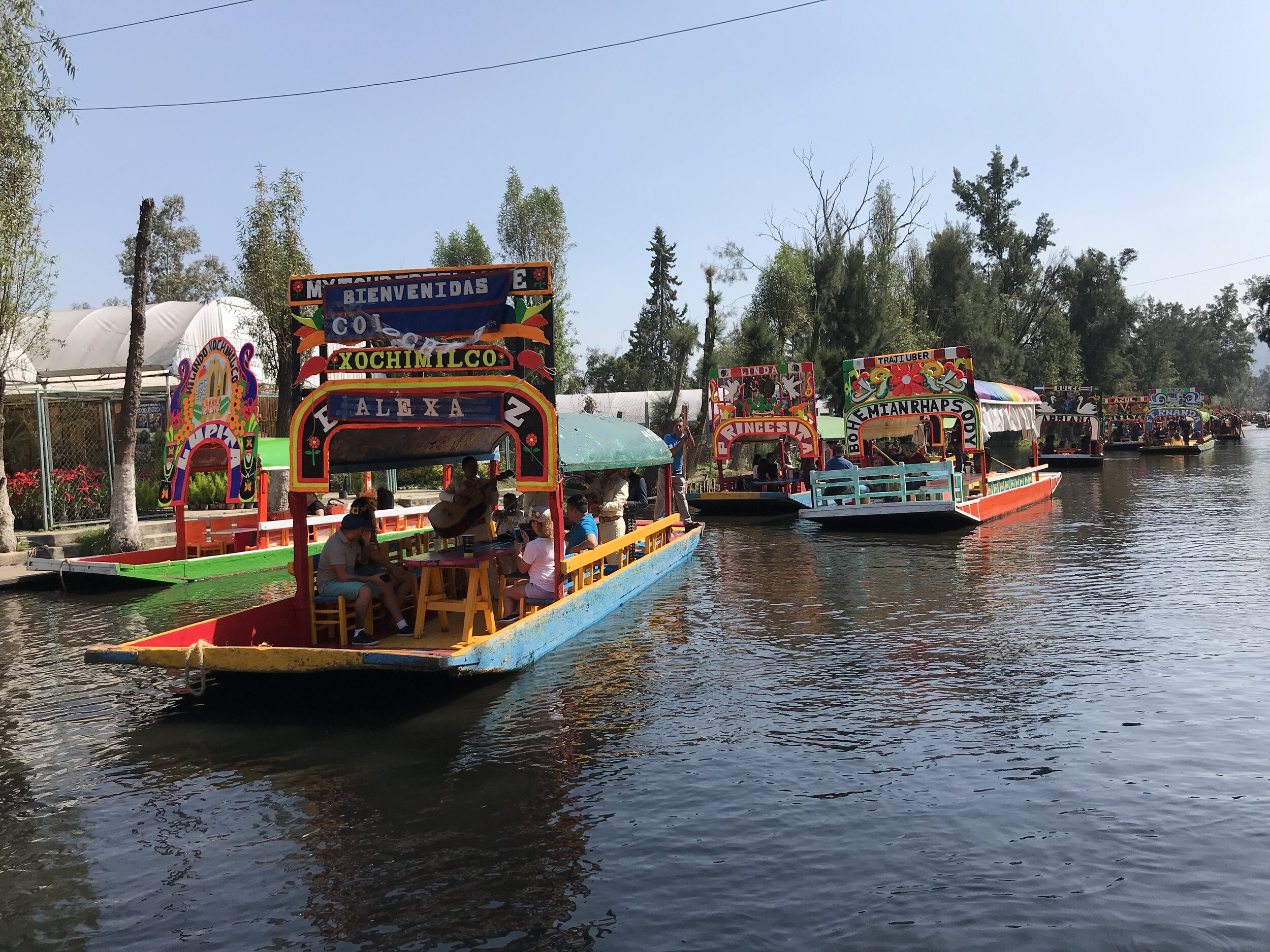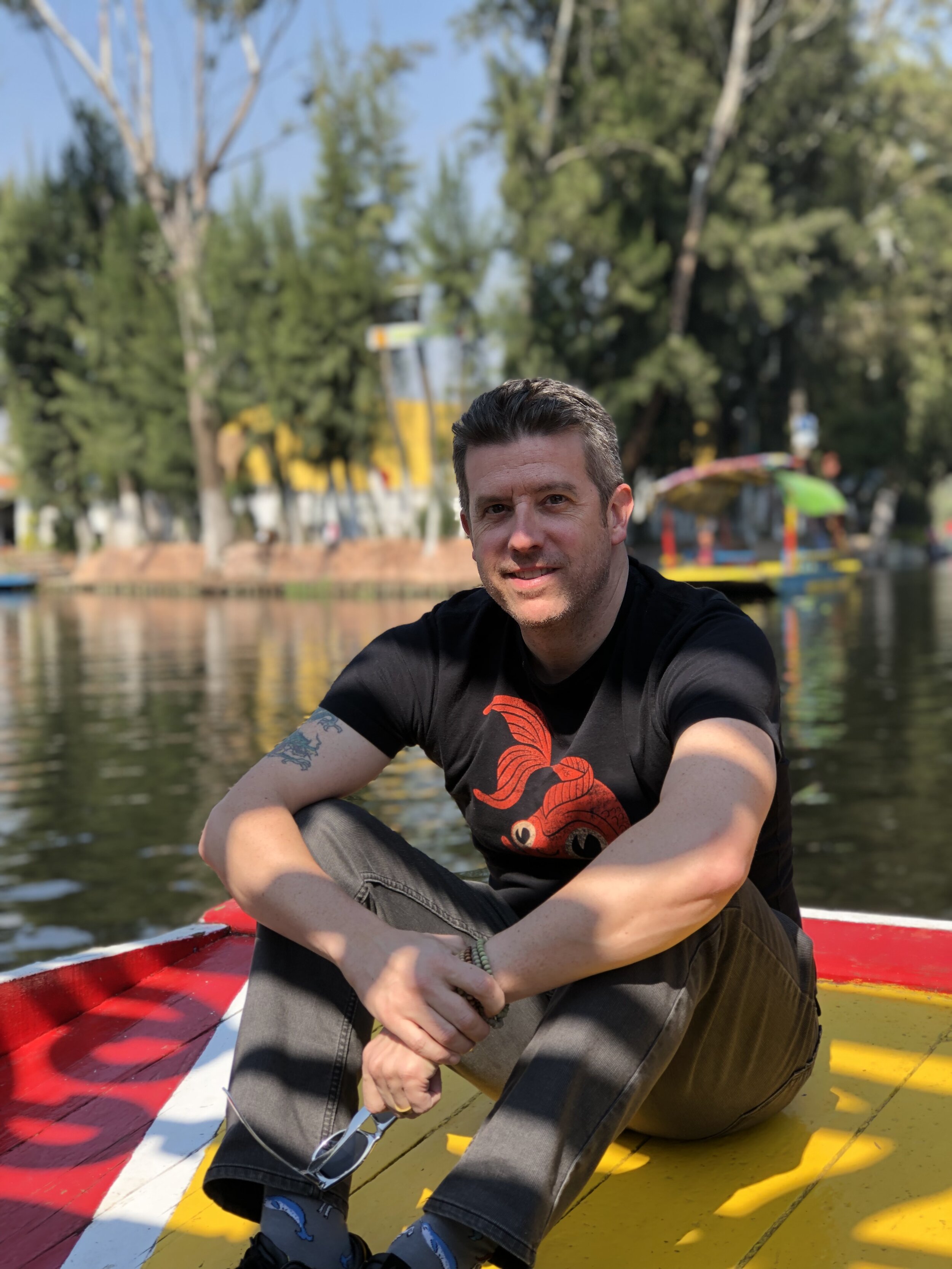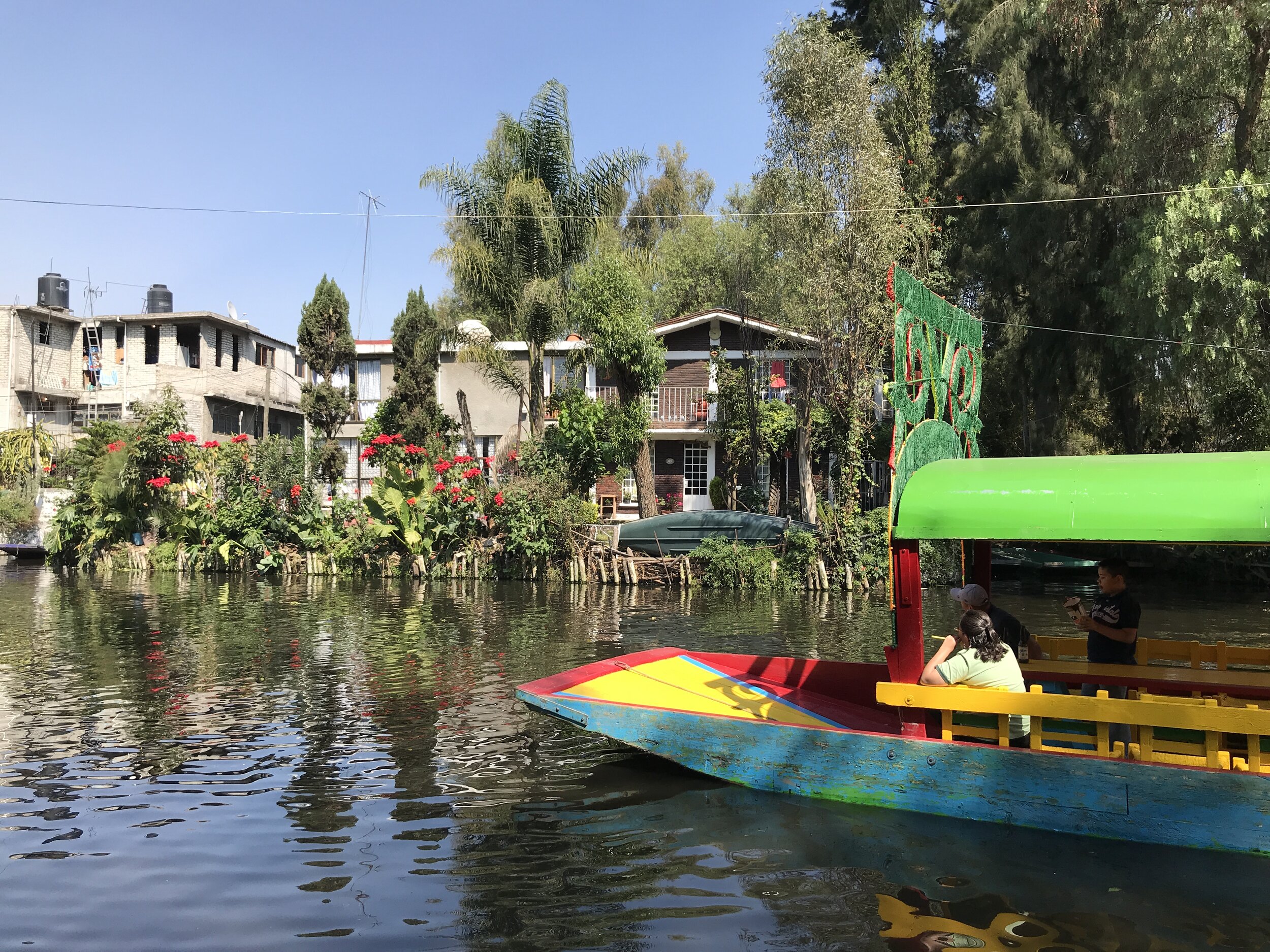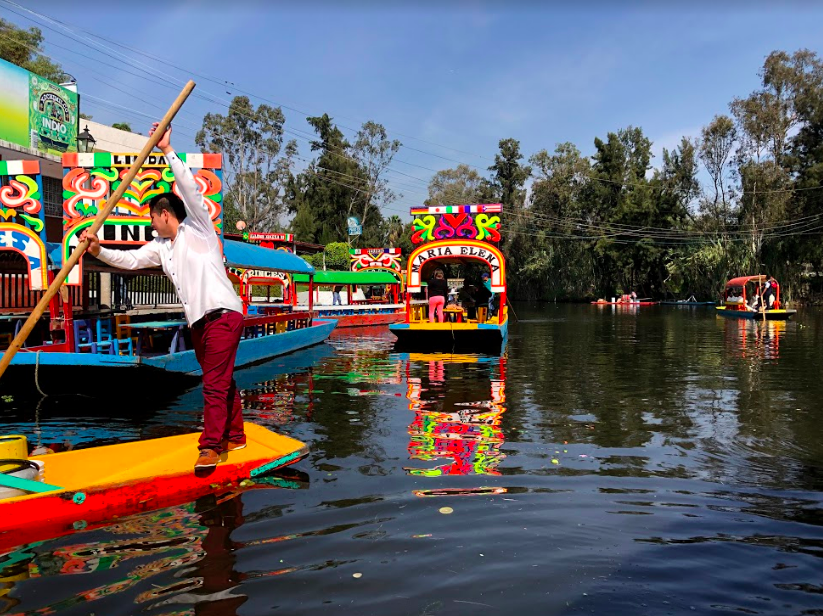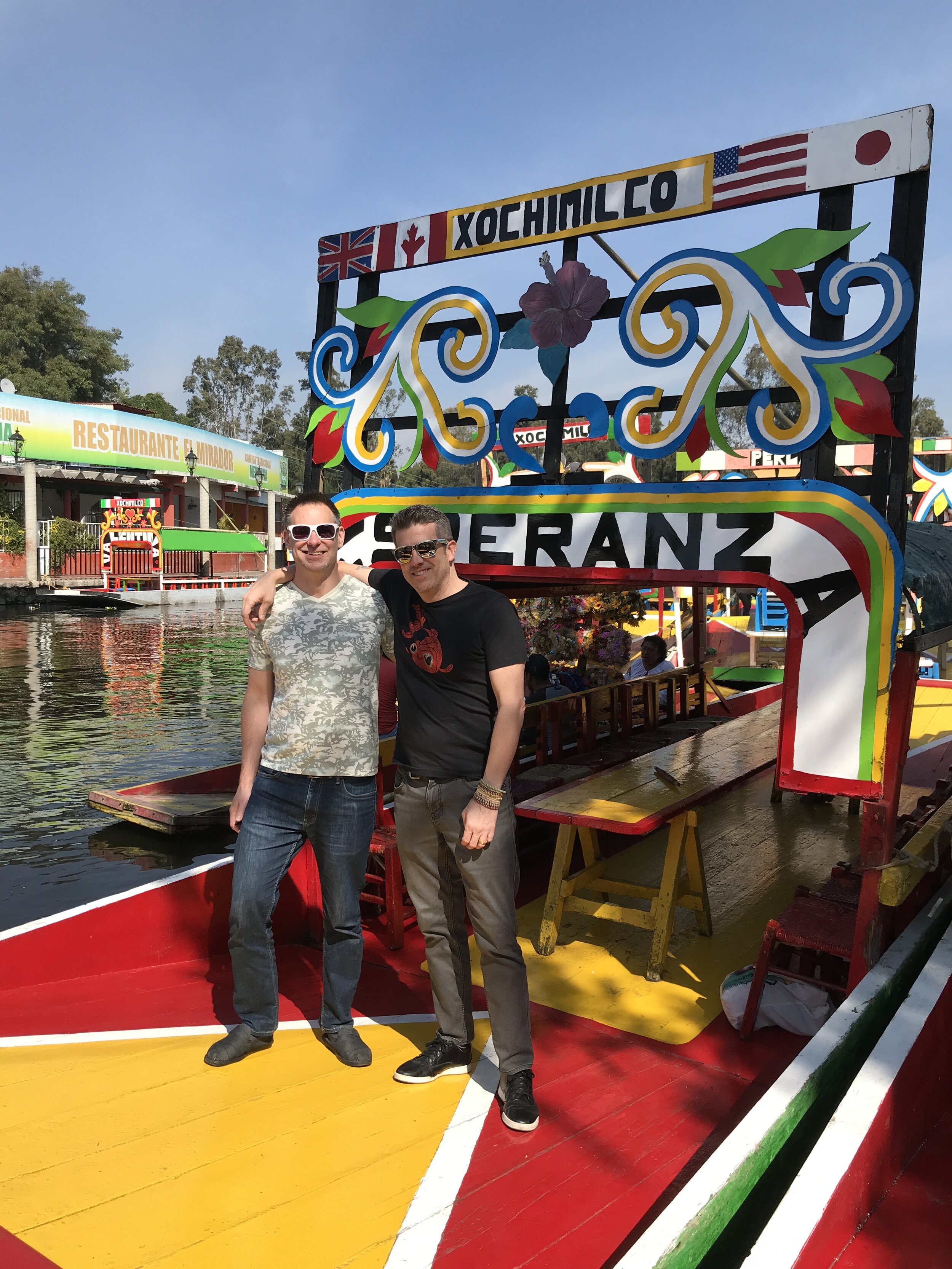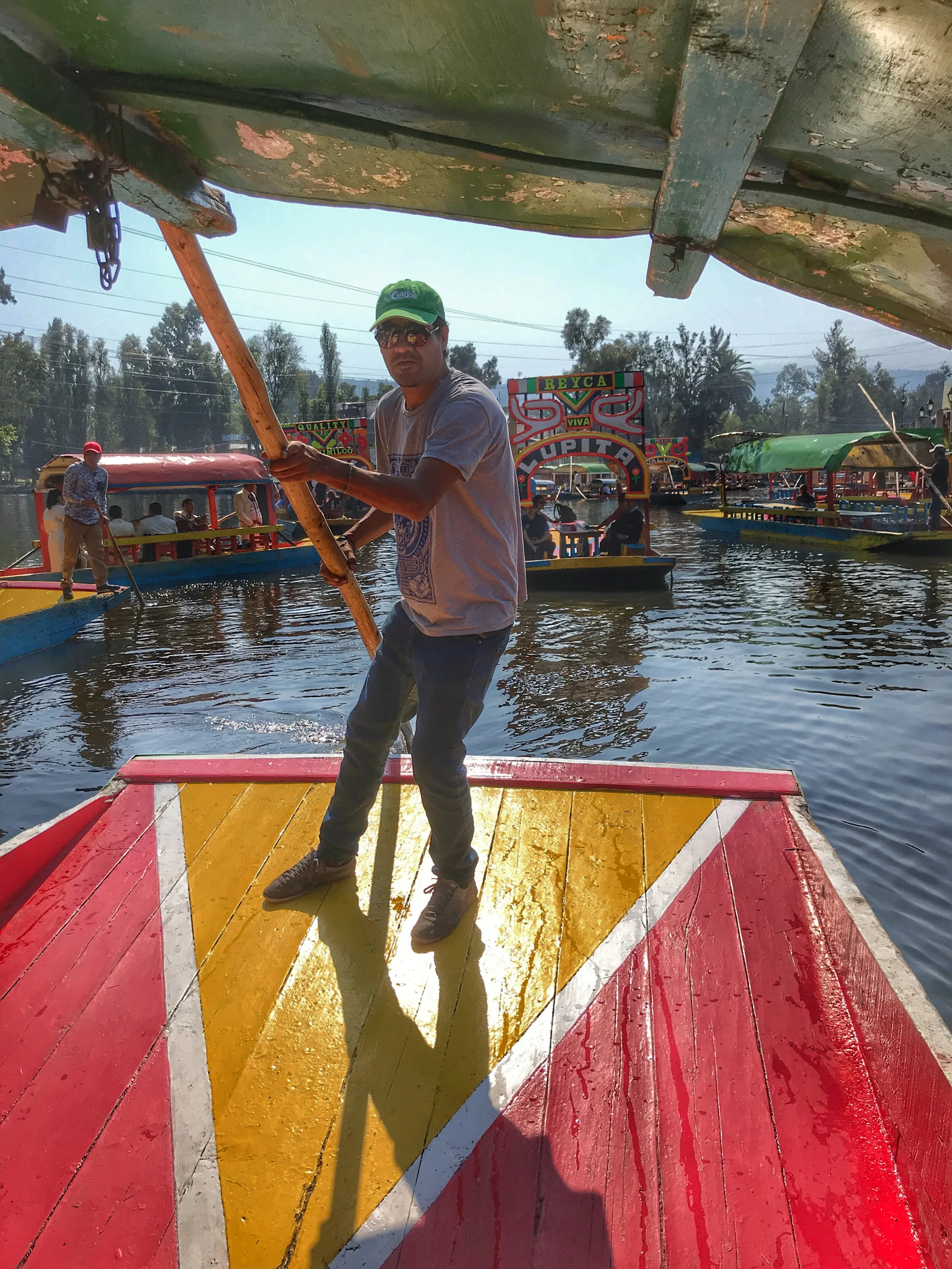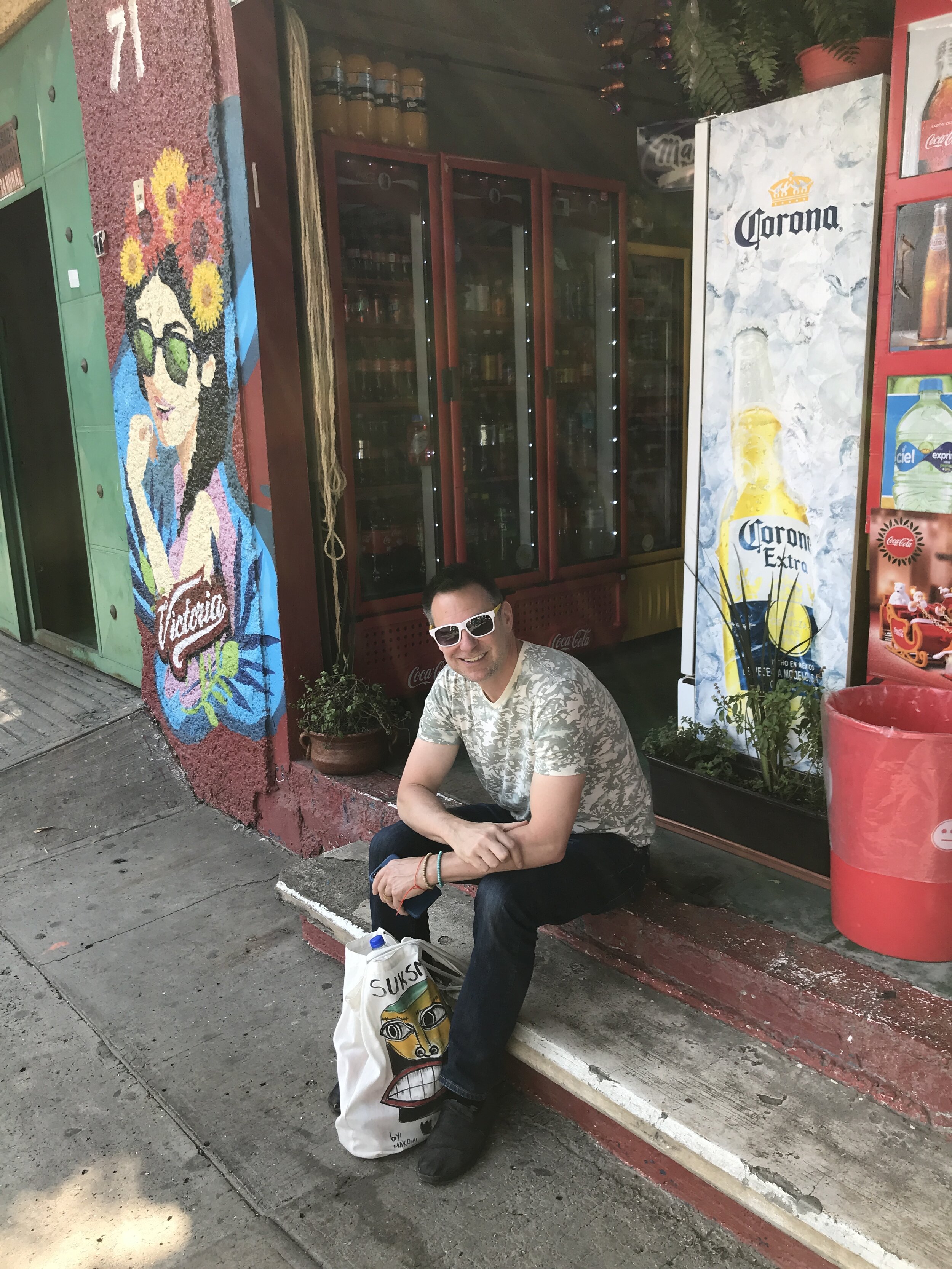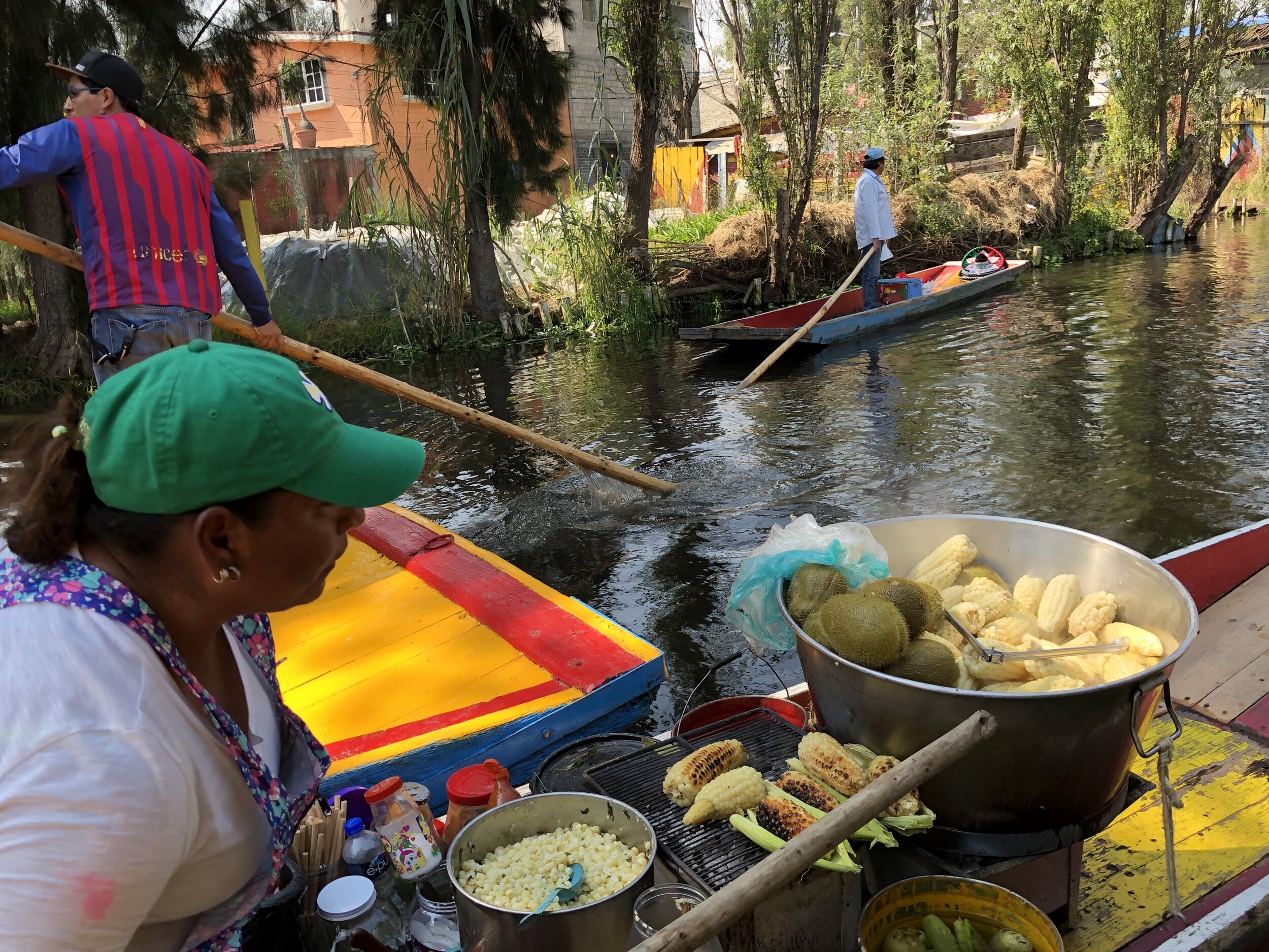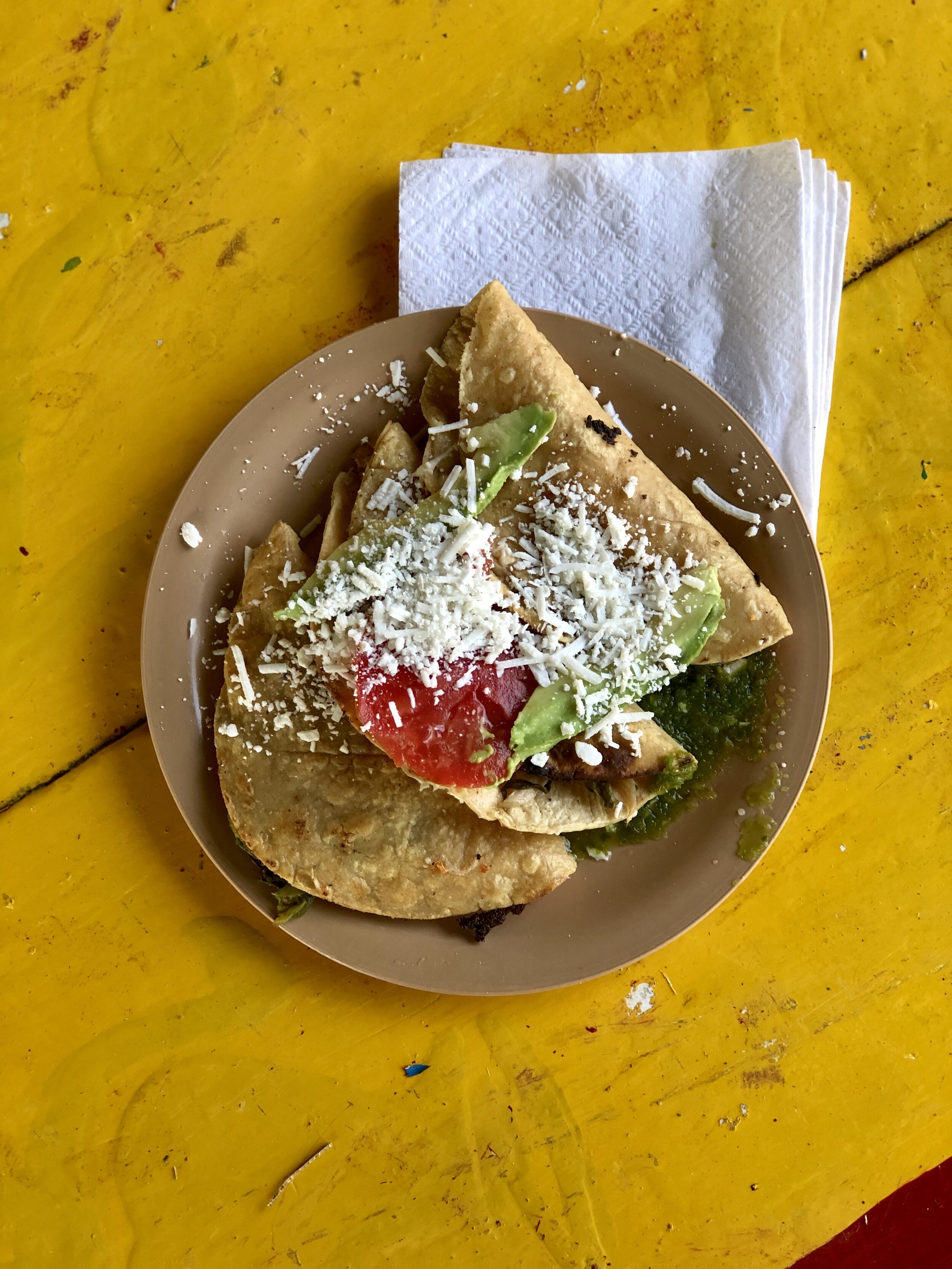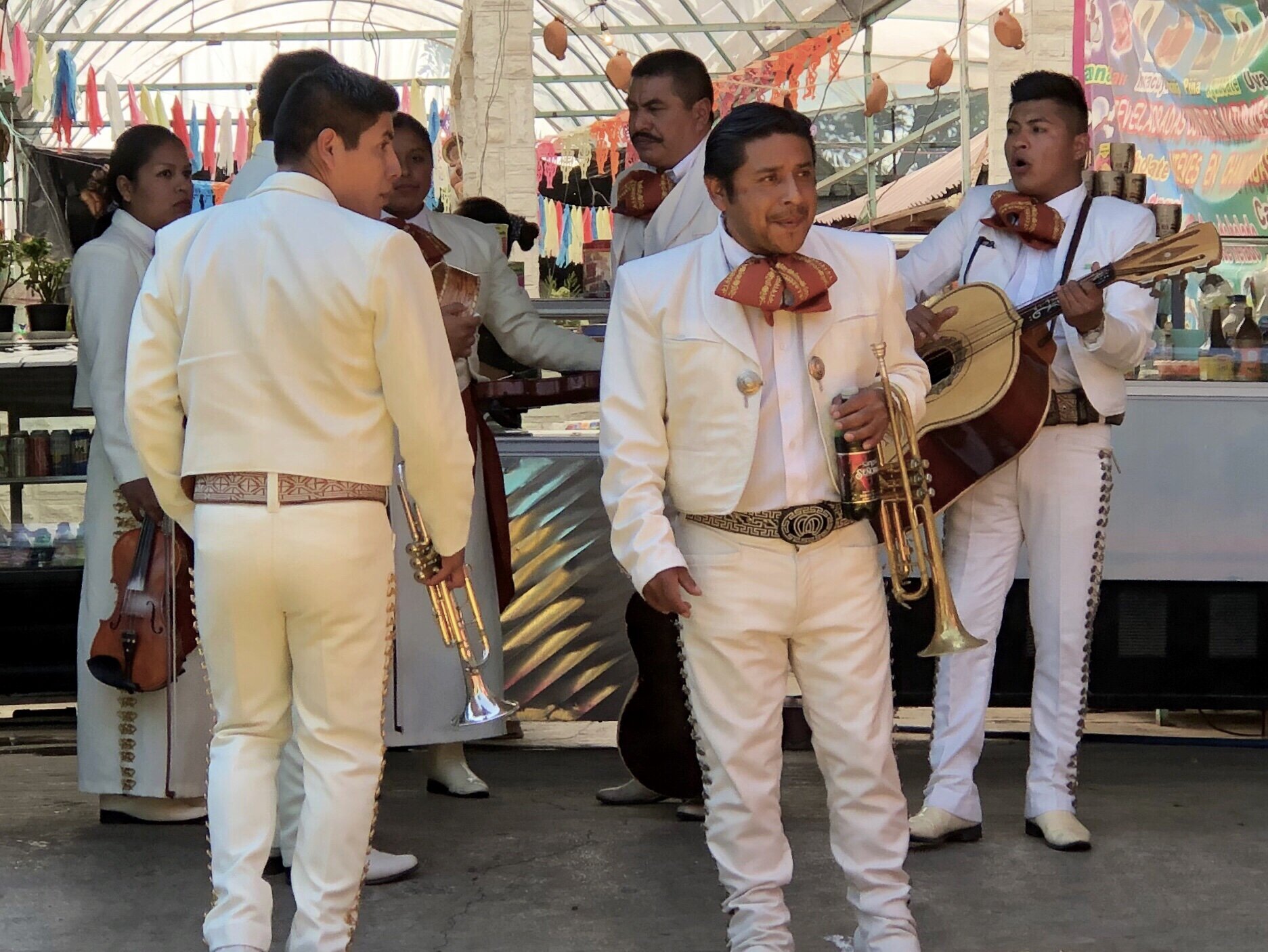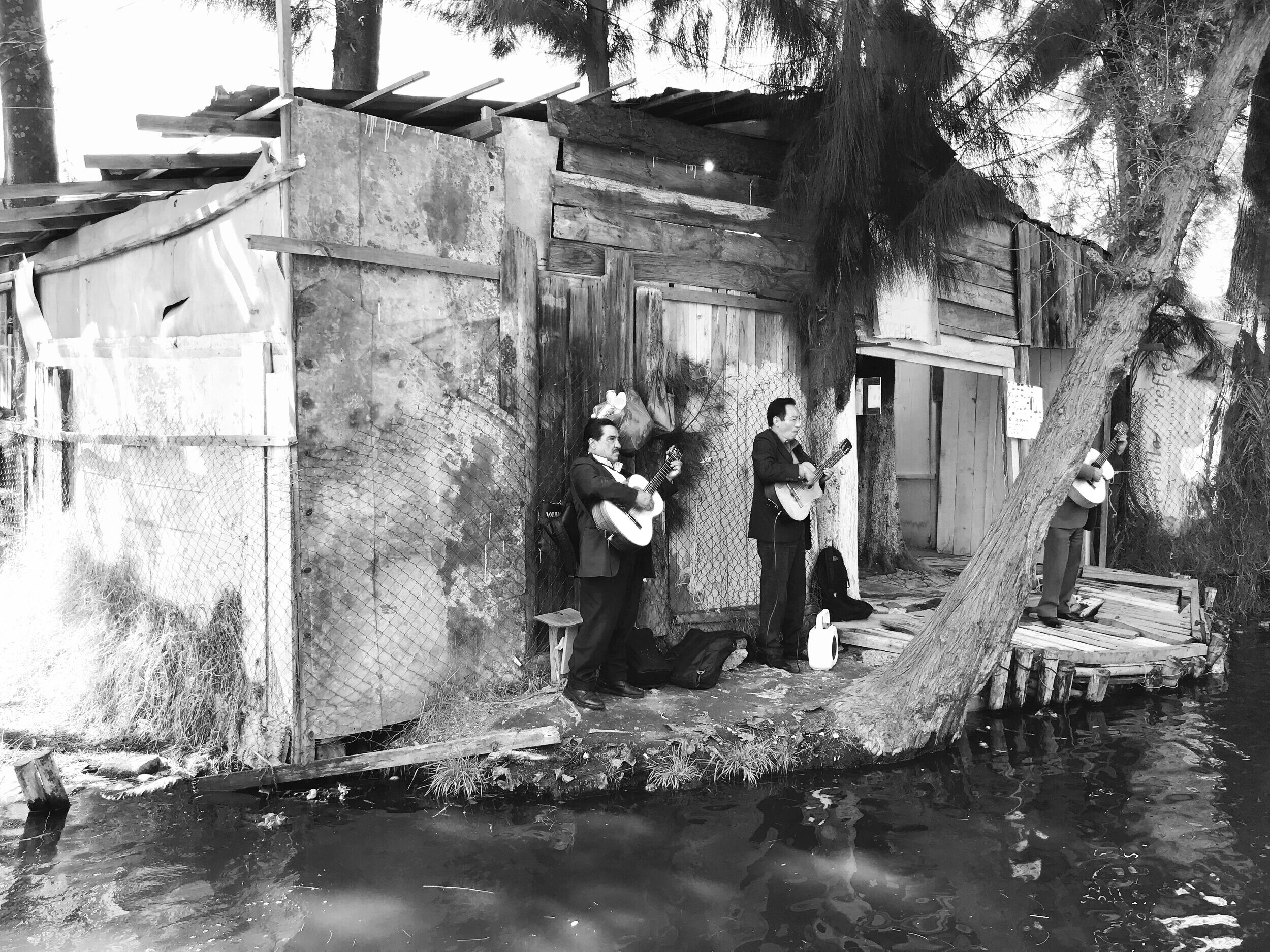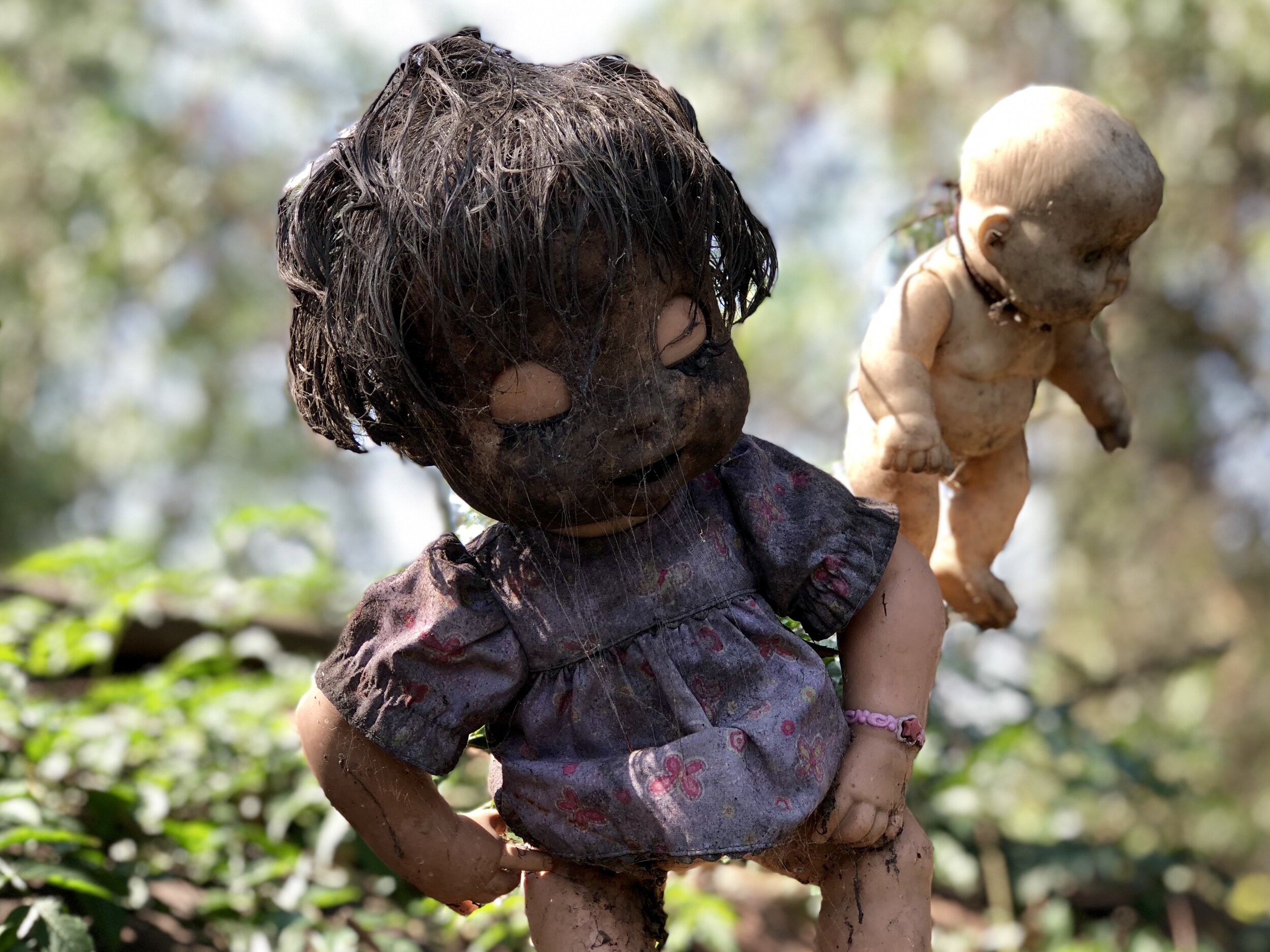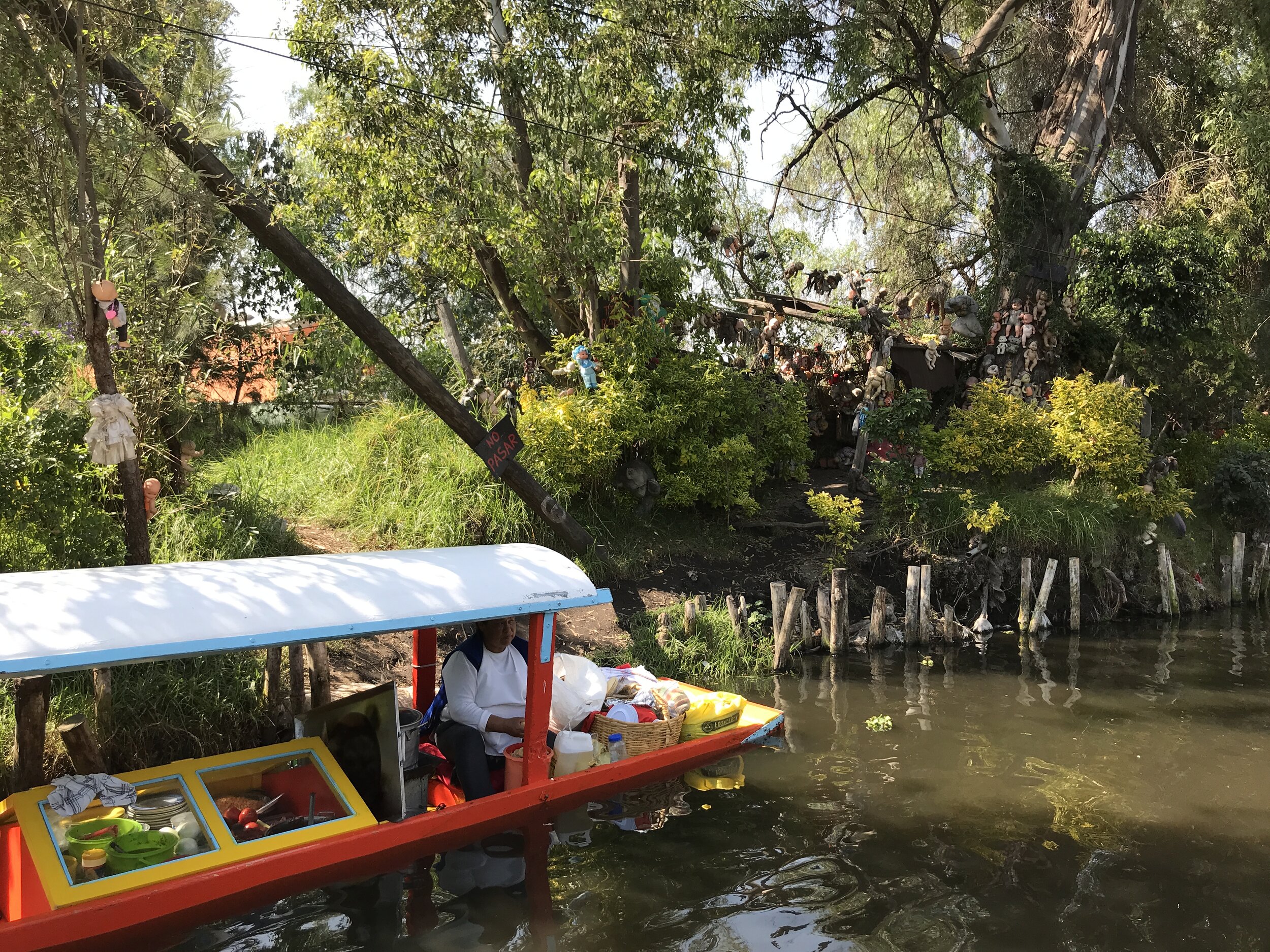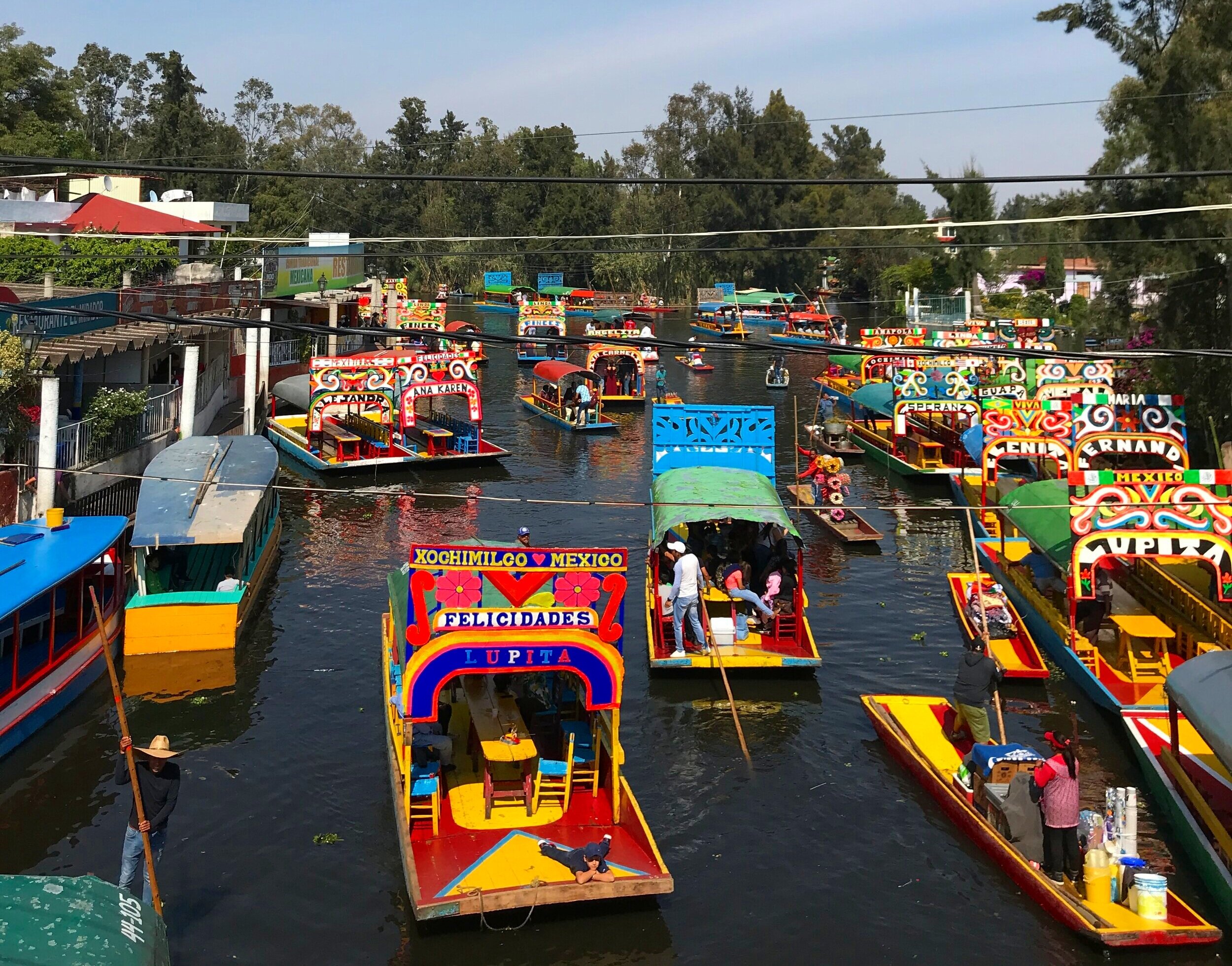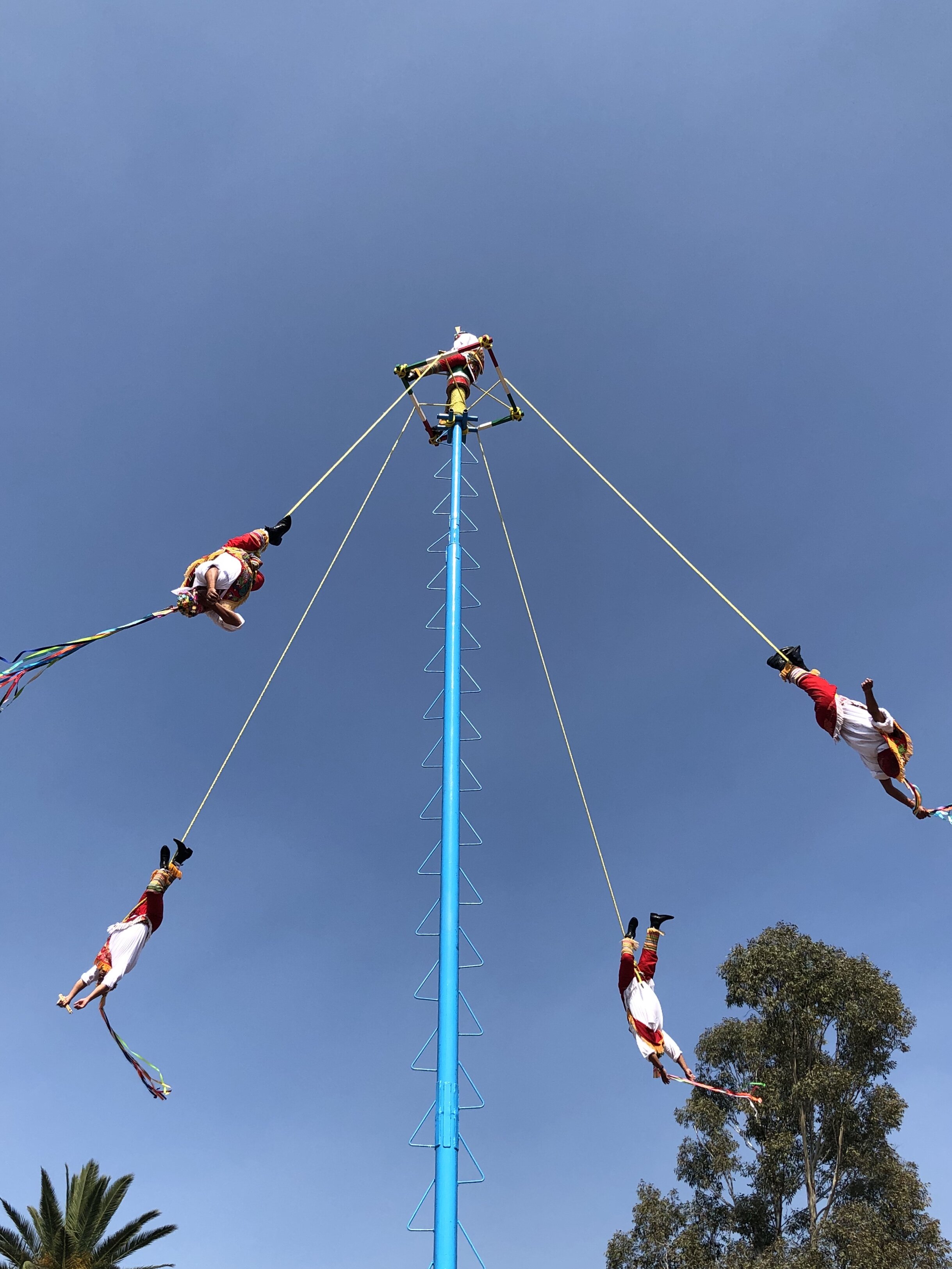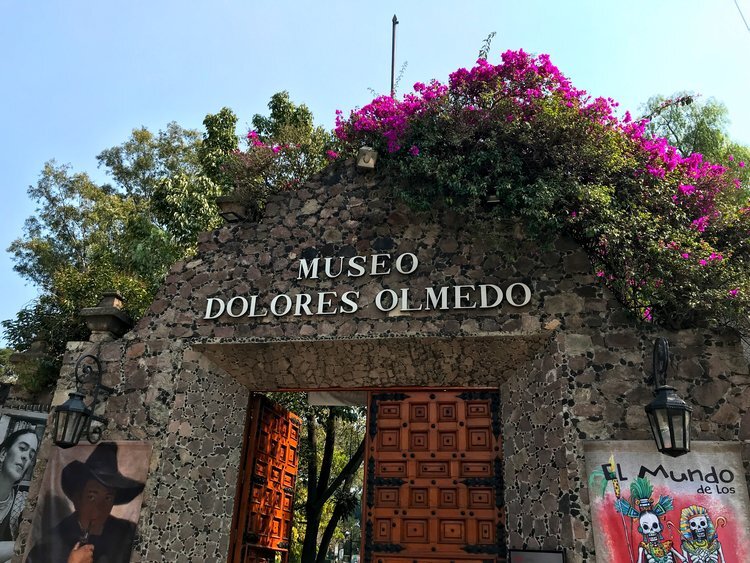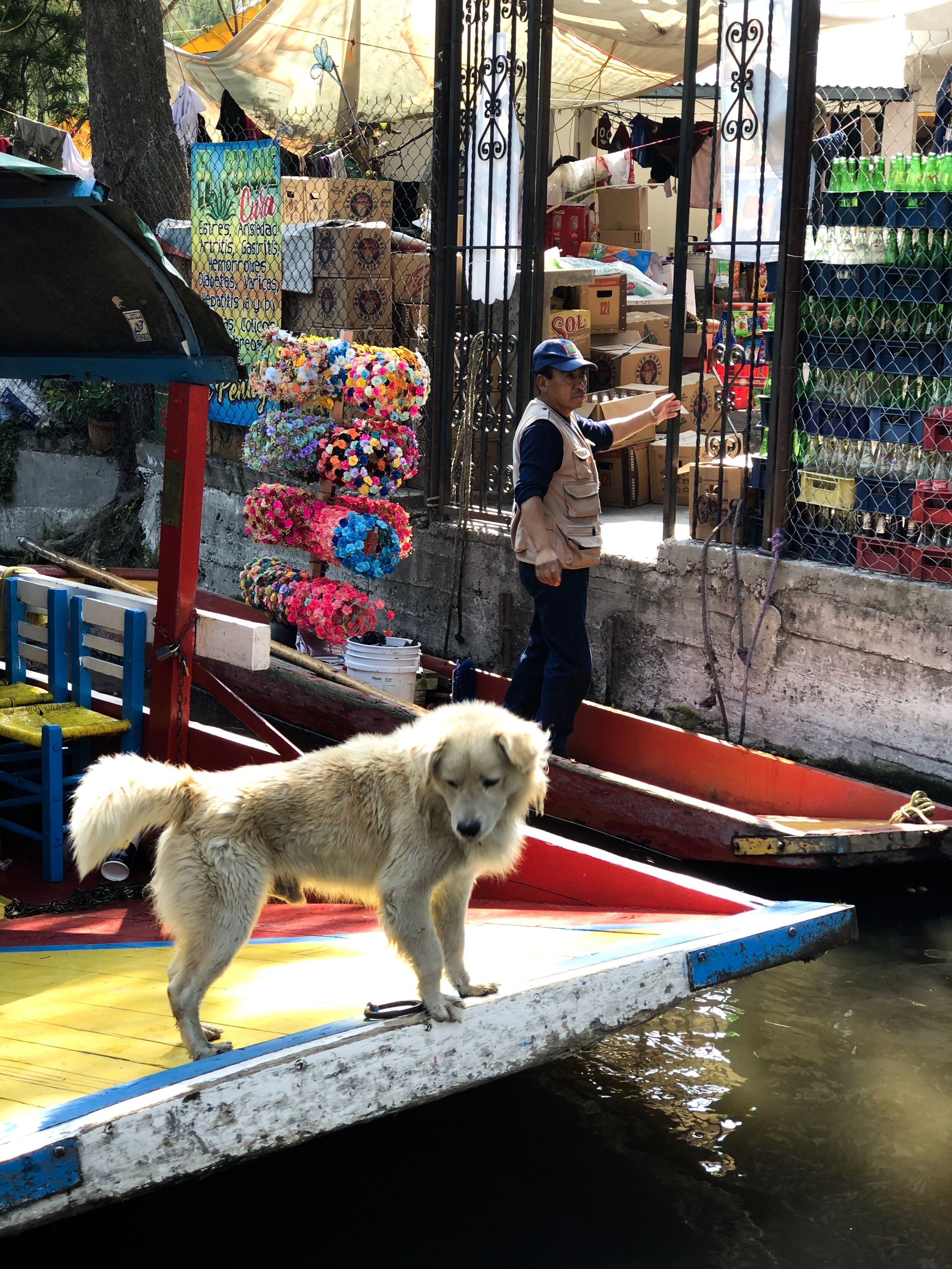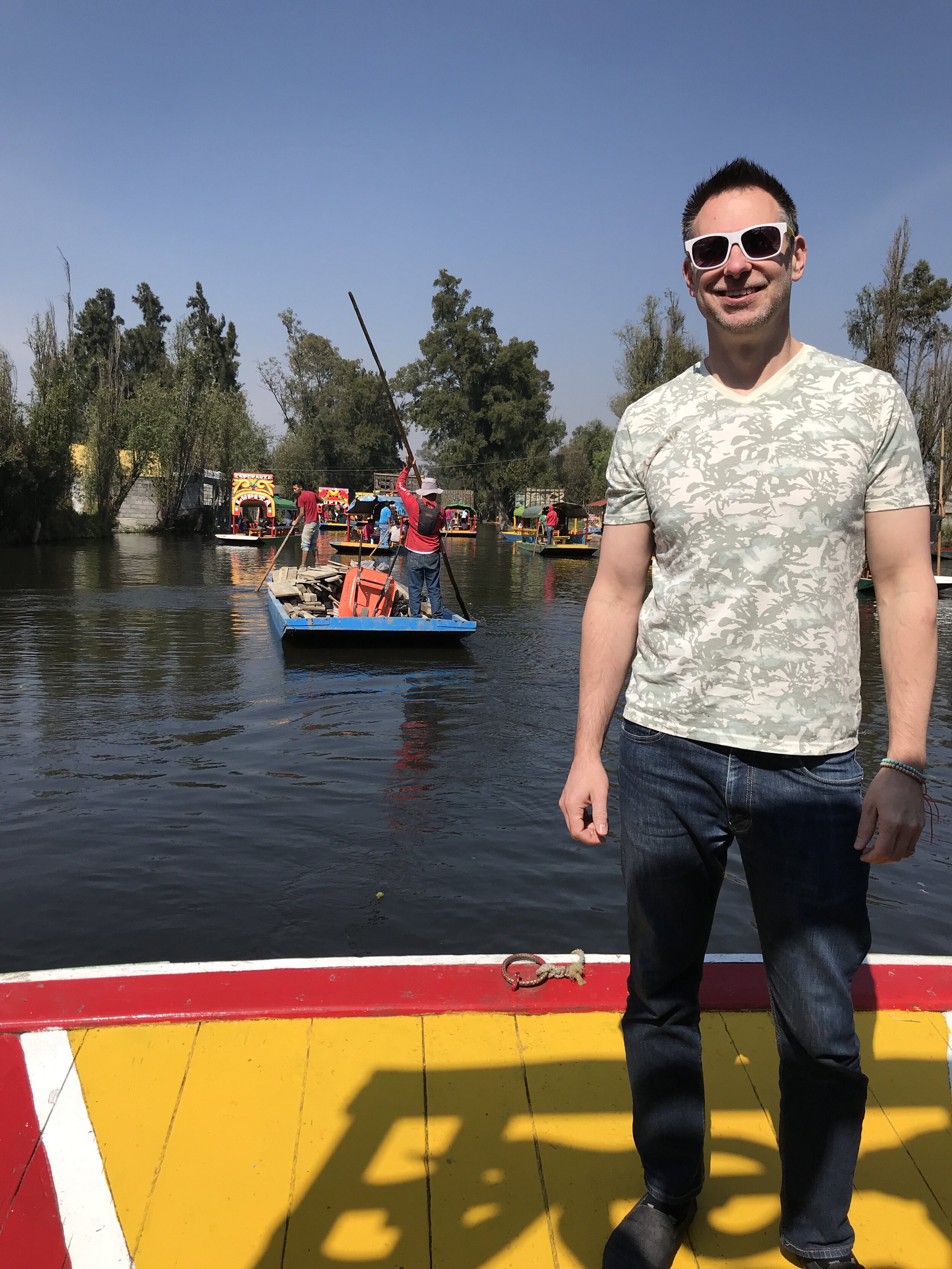Here’s what to know about trajineras, how to rent these Xochimilco boats, and how to get the most of your trip to chinampas and the Isla de las Muñecas.
Xochimilco is nicknamed the Venice of Mexico City — though the boats are much more whimsical than Italian gondolas.
Wally enjoyed a pleasant few hours at Xochimilco.
1. Pronounce it properly.
It’s “So-chee-meel-ko.”
“A long table runs the length of the trajinera, situated under a canopy. Food and socializing are the main priorities. ”
Floating gardens called chinampas line the waterways.
The Xochimilco canals are some of the only remaining features from Aztec times.
2. Learn a bit about its history before you go.
The Xochimilco canals are a vestige of the ancient Aztec Empire and still provide much-needed water to Mexico City. Now a UNESCO World Heritage Site, they’re located about 17 miles south of the Centro Histórico.
The name is from Nahuatl, the language of the Aztecs, and translates to Flower Garden, a reference to the “floating gardens” now known as chinampas. These man-made islets are situated throughout the waterways and are covered with fruits, vegetables and other plants. (We passed a large poinsettia farm on our excursion.) They’re a clever way to create more arable land in the midst of a wetland.
We chose to launch from Embarcadero Nuevo Nativitas.
3. Choose your embarkation point.
This confused us a bit, as there are a few different spots you can launch from. We ended up choosing Embarcadero Nuevo Nativitas, as it’s the best spot to leave from to visit the closest Island of the Dead Dolls (see below).
Duke and Wally aboard the Esperanza
No motors on these boats — they’re propelled and steered by a pole.
4. Don’t worry about haggling over the price.
Duke and I walked the docks, looking out at the brightly colored armada, wondering how we were going to choose one of the flat-bottomed boats known as trajineras, which sport painted archways and look like Mardi Gras floats. But then one of the captains, Sandro, approached us and offered to take us out for 500 pesos an hour (about $25 an hour). We had no idea if this was a good price — but he pointed to an official sign that had that rate right on it. That sold us, and we were glad we didn’t have to barter. So Captain Sandro aboard the Esperanza (which translates to Hope) it was!
A nearby store provided snacks and adult beverages to enjoy on our boat ride.
5. Bring some food and drinks.
As our Uber pulled into Nativita, the first thing we did was pop into a local market and buy some snacks and booze. We were glad to find a shop but next time we’ll plan a bit better and make sure we have a picnic, including fixings for margaritas. In fact, it would be a lot of fun to have a party on one of the boats. A long table runs the length of the trajinera, situated under a canopy. Food and socializing are the main priorities.
Some of the boats in the waterways are the equivalent of floating food trucks.
The delicious quesadillas we had for lunch that were made by a nice couple aboard a trajinera.
6. But save room for the waterborne food vendors.
It’s not too tragic if you forget to bring along some food. There are people who paddle narrow, flat boats along the canals, selling freshly made Mexican dishes. We bought quesadillas from a nice couple who parked near the Island of the Dead Dolls (hold your horses — it’s coming up).
Hire a mariachi band and have a dance party aboard your trajinera.
Strains of mariachi music can often be heard on the canals.
7. Hire a floating mariachi band.
We cheated and just enjoyed hearing the strains of the lively music as we passed by. There are entire boats filled with musicians in their traditional garb, and we saw a couple of bands aboard a rented trajinera, playing their tunes as people danced.
Horrifying (but cool) dolls like this are strung up all over the Island of the Dead Dolls.
The creepy Isla de las Muñecas
8. Plan a trip to the Island of Dead Dolls.
If you like creepy, off-the-wall spots, like we do, you have to stop by la Isla de las Muñecas, aka the Island of the Dead Dolls. This small isle is covered with dolls left in offering to appease the ghost of a little girl who drowned. Duke and I had found a doll on the street behind the Uptown Theater in Chicago, brought it with us to CDMX and left it on the island. Read more about the Island of Dead Dolls here.
As the day wears on, the canals get more and more crowded.
9. You might want to go a bit early in the day.
We had a relatively early start to our excursion, and the canals weren’t too busy for most of the time we spent there. Until, that is, we started heading back, and the canals were utterly clogged. When we got back to the embarcadero, I didn’t know how we were going to get through the traffic jam to dock. But Captain Sandro somehow eventually maneuvered us through the deadlock.
While we visited Xochimilco, the bizarre Danza de los Voladores was taking place.
10. Don’t miss the Danza de los Voladores.
After a pleasant couple of hours on the canals, we disembarked and walked around Nuevo Nativitas, where some market stalls had been set up. We cut over to head back to the parking area — and beheld quite a sight! Four men were hanging head-first in the air, spinning around a pole, held by ropes tied around their ankles. They circled the pole while one of their compatriots played something between a pipe and a percussion instrument while sitting atop the pole. I had actually seen such a spectacle on the Yucatán and knew it was a traditional ceremony — it’s part of the native Totonaca people’s folk culture and is known as la Danza de los Voladores, or the Dance of the Flying Men.
While you’re in this neck o’ the woods, visit the Museo Dolores Olmedo to see a large collection of Frida and Diego paintings on the grounds of an amazing estate.
11. Pair Xochimilco with a visit to the Dolores Olmedo Museum.
This gorgeous estate holds one of the largest collections of the works of Frida Kahlo and Diego Rivera. Come for the art, stay for the peacocks that roam the grounds. From Embarcadero Nuevo Nativitas, it’s about a 10-minute drive away. Read more about the Museo Dolores Olmedo here.
Before we left for Mexico City, a couple of friends who had lived there told us we absolutely had to check out Xochimilco — and they were right. It’s definitely one of the things that we will do again when we return. –Wally
This perro hopped from boat to boat in search of food and affection.
Duke’s on a boat!
